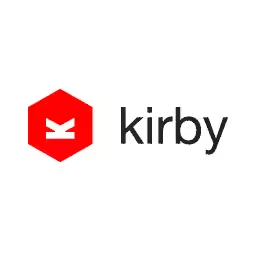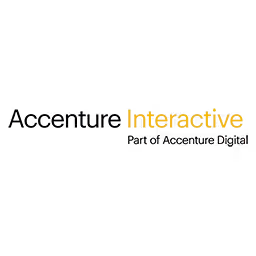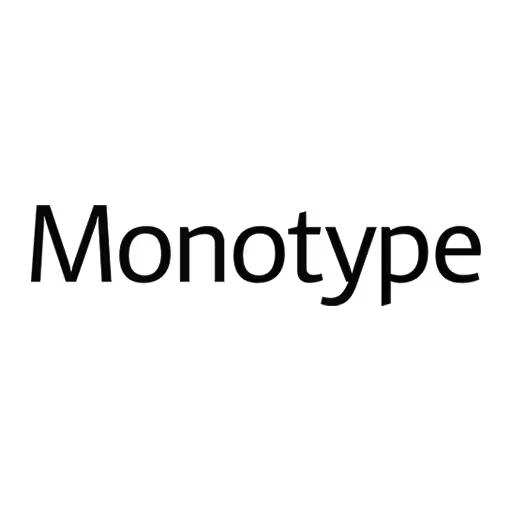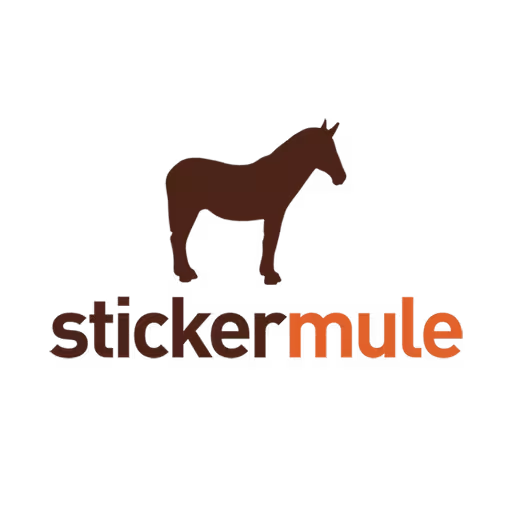Espen Brunborg

Espen Brunborg is an Norwegian designer based in Edinburgh, Scotland. In 2010, he co-founded Primate, a small web agency driven by a love of creativity, curiosity for technology, and a belief that great clients are born from honest relationships.
He started his career as a magazine designer before trying his luck at a small Edinburgh design studio.
When he was let go after only three months he chanced upon a job as a web designer, and the rest is history. Espen now spends most of his time trying to bridge the gap between graphic design and what we call web design. Is there a difference, really? Should there be?
Over the years, Espen has worked with clients like Scottish Widows, Edinburgh University, HomeExchange.com, WWF Scotland, Thistle Foundation, Waterstones, Children 1st and the Scottish Centre for Conflict Resolution.
He has never had an exhibition or a book written about him, but he once thought he was up for the “Young Norwegian of the Year” award, only to find out it was a prank executed by a Swedish client.
Talk: The Secret Life of Comedy
It has never been easier to make a web site, and our digital toolbox has never been greater. At the same time, we seem more concerned with automating our process and systemising design than with creative thinking and generating ideas. Is web design purely about utility? Is it all about convention? Is it a science? Or is there room for beauty, expression and art?
In this talk, Espen will take a tongue-in-cheek look at the state of web design, explore different creative mindsets, and show how adding a pinch of comedy can make a real difference to the bottom line.
Transcription
Audience: [Applause]
Espen Brunborg: Thank you. Thank you, Marc. Thank you, Marc, for allowing me to be here. This is the legendary btconf. I’m super excited.
Thank you also to Sophia Anna Lou, who came all the way from Scotland to see me. Thank you.
Audience: [Applause]
Espen Brunborg: Now I’ll just jump straight in because there’s a timer telling me I’ve got 44 minutes, 33 seconds left. This is me. I taught Yuko Shimizu everything she knows about drawing, as you can see.
Audience: [Laughter]
Espen Brunborg: My name is Espen. I’m Norwegian, which basically means I’m an arrogant prick with oil money and a funny hat.
Audience: [Laughter]
Espen Brunborg: I live and work in Edinburgh. I started a small company called Primate. We do Web design and things like that. I have a couple of dogs. I have Twitter and Instagram. Please, if you want to give me a shout, do.
All right. Okay. Sorry. I put this in here because I always forget to plug in the sound, which is there, so that’s good. Okay. I didn’t forget.
Right. Comedy. Comedy. I’m here to talk about comedy. I’m Norwegian, which is already a bad start. I’m talking to an audience of hung over Germans.
Audience: [Laughter]
Espen Brunborg: You know we’re in for a long morning, I think. I actually did some research before this event because I wanted to open up with some sort of German joke or something to just get under the skin of German humor. And after a few hours of research, seven, eight hours, late morning, I found this article.
Audience: [Laughter]
Espen Brunborg: You know, settle in.
Actually, what I’m going to talk about is comedy in the context of design and Web design. It basically just means the fun stuff online, the stuff we don’t get in style guides, the stuff that adds personality and stuff. It’ll become clear.
Before I get to that, can we just do the light thing now and kill the lights? I just want to read a little story in this book. I’m sure you’ve all read it at some point. It means a lot to me, so if we can all just quiet down a little bit, I’ll read you Genesis.
In the beginning, there was only HTML and the Internet was very ugly, indeed. And God said, let there be style.
Audience: [Laughter]
Espen Brunborg: And there was CSS. His followers praised all the colors and all the fonts, and they floated left and they floated right, and they rejoiced. And God was very pleased with Himself, and He decided to celebrate with a few drinks.
On the second day God created Flash.
Audience: [Laughter]
Espen Brunborg: And He was very hung over when He did so.
Audience: [Laughter]
Espen Brunborg: And He said, “Praise me, for I have given you vector graphics and animation,” and His followers praised Him as they waited for the page to load.
Audience: [Laughter]
Espen Brunborg: Then they clicked “skip intro,” and God was very disappointed because He worked really hard on that intro. His followers inserted AdWords in all their pages, and God started to think that maybe Flash was a mistake. And maybe it was a bad idea to get drunk on a Monday night.
On the third day God created WordPress and He was determined to correct His mistake. He said, “Praise me for I have given you a voice. Now go forth and blog about love and kindness and all that is good about the world.” Halleluiah.
His followers praised Him and said, “Hallelo world!”
Audience: [Laughter]
Espen Brunborg: Then God said, “Oh, my God.” That’s a terrible pun.
Audience: [Laughter]
Espen Brunborg: They blogged vigorously about interior design and makeup and celebrities, and then they developed WordPress plugins for all their AdWords.
On the fourth day God created the iPhone and the world went completely bonkers for it. But a young disciple named Ethan from Boston, he was not happy, and he pleaded with the Lord. “Dear Lord, the iPhone is great, but now my clients are asking for two websites: one for mobile and one for desktop. What should I do?” And the Lord heard his plea, and He appeared before Ethan in the shape of a burning modem.
Audience: [Laughter]
Espen Brunborg: The Lord said [dial-up Internet connection sound] and He gave young Ethan the holy staff of media queries and told him to spread the Gospel of Responsive Design. Then the world finally rejected Flash because the iPhone would not support the AdWords.
On the fifth day God created a whole bunch of stuff. He created HTML video, retina screens, professional typography, and all this crazy stuff. And He said, “Praise me for I have made it so that you can express yourself more creatively.” The Internet tripled in size, everything took forever to load, and autoplay video AdWords became a thing.
On the sixth day God created preprocessors, frameworks, style guides and pattern libraries. And He said, “Praise me for I have given you a tool or several tools so you can express yourselves more consistently and more efficiently.”
His followers rejoiced, and they quickly set about arguing about naming conventions. But God was happy, and He went to bed smiling that day because He knew that His work was done, and He was very much looking forward to Netflix and chill.
Audience: [Laughter]
Espen Brunborg: On the seventh day He woke up early because He was so excited to see what His followers had made of His creation. He visited all the websites and all the Web apps, and He started to wonder, “How can so many different things look so similar?”
He wondered, “Why are there AdWords everywhere? And why does everything take so long to load?” He clicked a link that said Lion Meets Human Adoptive Father after 13 Years. You’ll Never Guess What Happens Next.
Audience: [Laughter]
Espen Brunborg: He was very disappointed when He found out because He already knew because He is all knowing.
Audience: [Laughter]
Espen Brunborg: The more God explored, the more frustrated He grew. By the end of the day He thought to Himself, “I’m sorry Sophia. Fuck this.”
Audience: [Laughter]
Espen Brunborg: I gave them a great voice, but they’re not speaking of anything important. I gave them boundless creativity, but everything is just monotonous and dull. They are not worthy. God decided finally to smite His followers and cleanse his creation of sin, and thus He created ad blockers and went back to sleep.
Right. So begins this talk. Can I get the lights back on? Thank you.
Audience: [Applause]
Espen Brunborg: Thank you, guys. You’re too kind. That little story takes us to where we are now, 2017. The Internet today is basically like this: a big, great publishing machine. We have, you know, CMSs are free. We have almost like push a button and create a whole website. We’ve got cheap and very accessible hosting. We’ve got frameworks and patterns and everything is just there for us to create websites really efficiently.
Of course, everything looks dull, but who cares when you have this: the publishing machine. The publishing machine comes in three parts. The first part is about the CMS, and we got a whole bunch of choices there. For example, if you want to make a blog, you can press the top button is for WordPress. If you want a magazine, you press the other button for WordPress. If you have a brochure site or marketing site, or any site, really, you can press the third button, which is also WordPress. There’s other choices too like Joomla or Drupal or the Grid or Squarespace, but you know we have this world of choices, maybe like five choices. It’s amazing.
The second part of the publishing machine is a template. Now so the CMS helps to handle the content, but we need a layout so we have a site that really works for the message that we’re putting out there. In terms of templates, this model has two choices: Classic I, which is for the company that really wants to stand out.
Audience: [Laughter]
Espen Brunborg: We have Classic II, which is so radical that most people don’t even touch it.
Audience: [Laughter]
Espen Brunborg: After we choose a template, we go on to the theming. This is where the fun starts. This is the icing on the cake. It gives you real personality. This particular publishing machine is an old model, so it’s got a handful of choices of the style, you know, a theme: retro, vintage, traditional, old fashioned, shiny if you really want to be like meta retro. But newer models have also flat. Again, there’s a lot of choice we can choose when you chose a style.
After all of that usually what we do is we just put the content in. I could talk about content all day, but let’s be honest. Who gives a shit? Right?
Audience: [Laughter]
Espen Brunborg: That’s always the sarcasm.
After we put the content in, we push some buttons, turn some knobs, wait a few seconds, then out pops our website. Our beautiful, unique, handcrafted-ish website that we worked for literally minutes to create. It’s amazing. Here it is, and it’s beautiful. It’s yours, and it’s unique, except everybody else’s websites are also beautiful and unique, and they’re all occupying the same space called the Internet.
All these websites, they look the same. They kind of read the same, and they work the same. In many cases that’s a good thing. Yaron Schoen, he wrote this article defending how much homogeneity in design by saying, “Look. Jackets all look the same too, more or less, but it’s good because then we know where the pockets are.”
What he’s saying is, on the Internet we have this unified language. We know how websites work. You don’t want to force anyone to relearn that language every time they open a website. In that context it’s good.
But not everybody makes jackets. There are socks and gloves and scarves and underwear. You know we have this plethora of different types of websites: property listings or Facebook or a portfolio or a beer shop. Yet with all these different forums, so many different functions, we have the same cookie cutter website process. We we’re trying squeeze all these different things through the same holes and the result is obviously dull and homogenous websites.
Mark Boulton, he wrote an article a few years back about design abstraction escalation. What he means by design abstraction is our tendency to take snippets of design or code or content and we put them in these drawers. We create pattern libraries. We have patterns for navigation or for footers or carrousels or whatever it is, and we store them all in our own private repositories or public repositories, and we reuse these elements.
That’s kind of good because it means we can do stuff quicker. We learn from each other. But it has a price. This conformity and the efficiency, it means that we’re no longer designing websites. We’re just manufacturing them. We’re losing. We’re taking the soul out of it, Mark says, and I have a tendency to agree with him.
It leads to this mindset of the publishing machine where any problem can be put in on one end, we press a button, and then we get a solution on the other. Then some new technology comes along like--I don’t know--HTML video, and everyone is like, “Yes. Video. That’s what’s going to save my business. My failing magazine sales are going to be saved by this new CMS,” or this video or whatever is the next technology.
We think erroneously that the tech isn’t good enough. When we just get this new tech thing then it’ll be better, but that’s not the problem. The problem is that we make shit. The tech is good. We have all this power, but we just churn out shit, a lot of shit and, you know, I agree with Joshua here that the people don’t care about our cheap shit because people want the good shit.
I’m sorry again, Sophia. I’ll stop swearing soon.
Now, the good shit is difficult to define, but we all know it when we see it. Here it is.
Audience: [Laughter]
Espen Brunborg: But how do we quantify good shit? How do we define good design? I have this list of definitions that I think it’s true. Especially nowadays, I think good design is always fast. We don’t want to force anyone to wait, even if they’re on a slow connection. We want to give people what they’re looking for when they’re looking for it.
Good design is also universal. We want to give as many people as possible the same experience regardless of which browser they’re on or which disability they have or, you know, we want to make the Web accessible to everybody. If you don’t do that, you’re kind of discriminating.
Good Web design is intuitive, which means, as we touched upon earlier, you don’t want people to have to learn a particular visual language of your site. You want to adhere to the common patterns so that people recognize what you’re doing.
Good design is invisible. I’m sure we’ve all heard this thing about typography. When you don’t notice the typography it means it’s well set because all you’re focusing on is the text and the content.
Good design is user-centric. My ego as a designer counts for nothing, really, if my users don’t like what I’m doing or if it’s difficult to use or whatever.
Finally, good design is scientific. None of this stuff matters unless we can actually test what we do and be able to iterate based on the feedback from those tests.
Do people agree with this? Can I have a show of hands? About half. That’s odd.
Audience: [Laughter]
Espen Brunborg: Actually, it’s not odd because there’s another half to this. Good design, I tell you, is slow. Sometimes it takes a while to really get the point across. Not all stories are told within two seconds. Sometimes it’s worth stopping to think a little bit.
[Pause]
Espen Brunborg: Good design is individual. The best books that I read or the best movies I see are the ones that feel like they’re written or created for me. They connect with some personal experience I’ve had or they fit with my psyche or my philosophy or whatever it is. It feels like, oh, my God, this is created for me. It’s so good, which means also in our world there’s value in being specific and targeting in on a niche group with a particular message, for example. What I’m saying is your website, despite what you might think, it isn’t for everyone, and every website out there isn’t for you. Good design can be individual.
It can also be surprising. I think there’s great value in being surprised with a funny joke, for example, or you can empower people by allowing them to discover something they feel better about whatever you’re trying to say.
It can be impressive. Yesterday we saw Seb Lester. We saw Yuko. Their stuff is so amazing. Imagine the poems that Seb showed set in Helvetica. It doesn’t really carry the same emotional impact. In my mind there’s a time and a place for it, but really intricate stuff, the stuff that blows your mind for the sheer craft of it can really be powerful and emotional.
Good design is also visionary. As you know, we talked about Ford and, you know, when he made the car. If you asked a focus group, “What do you guys want?” they would have said a faster horse. If you asked all of us around -- when was the first iPod released?
If you put these kind of visionary products to a committee, you lose the vision. It dies. I think really good design requires this visionary to carry it forward. I think Stefan Sagmeister at one point said that you should be able to see the ghost of the original creator in the final work.
Finally, good design is artistic. Of course it is. It’s engaging. It can be challenging. It can be really emotional. It can make you feel sad. It can make you feel happy. It’s not always solving a UI problem. Sometimes it’s about creating something original or trying to tap into a feeling, and you can’t necessarily A/B test your way to that.
We have these two sets of test statements. Do people agree with the second set of statements, by the way? About half. A little bit less.
I think both sets are true depending on the context. But I also think we have this tendency to group them up and we fight. It’s convention versus expression, science versus art, or utility versus beauty. But I don’t think it needs to be like that. It could be both.
Why isn’t it convention and expression, science and art, utility and beauty, or music and comedy, which is really what this talk is about, so these minutes have just been a waste of time, really?
Audience: [Laughter]
Espen Brunborg: Right. Music and comedy in the context of Web design: it takes a while to explain. I’ll start with this guy: Jeff Greenspan. He’s an artist, creative director, standup comedian now, I think, as well. He lives in New York, and I met him in Barcelona the same time I met Marc, actually.
We spoke about music and comedy because we’re both interested in it, and we both love Seinfeld, which is the greatest sitcom ever. But it wasn’t our love of Seinfeld that made me bring him up today. It was what he said about music and comedy and how, in his mind, they’re the same thing. They’re two sides of the same coin.
Ultimately, music and comedy work because they’re based on rhythm, right? Musical rhythm is fairly easy to explain. You know we can nod along, to tap our fingers, finger drum, whatever. Everybody knows what musical rhythm is.
To explain comedic rhythm, I’ve got a bonus chapter called Hipster Jokes. Ultimately, comedic rhythm is simple. It’s a one, two, three thing. It’s your setup, your anticipation, and then your punch line.
To do it in a classic example, we got the setup being, “Why did the hipster burn his tongue?” Then we have the anticipation. Everybody is really curious, of course. The punch line is, “Because he drank it before it was cool.”
Audience: [Laughter]
Espen Brunborg: Get it? Cool.
I’ll do one more. I don’t think you got it because no one laughed.
Audience: [Laughter]
Espen Brunborg: Without the anticipation slide this time. How did the hipster die? He drowned in the mainstream.
Audience: [Laughter]
Espen Brunborg: Now you laughed.
How much does a hipster weigh? An Instagram.
Audience: [Laughter]
Espen Brunborg: All right. We’re getting it. Comedic rhythm is basically, you know, you set something up and then you have a punch line, which means that rhythm in both cases is expectation and reward. In music you have a beat. You set up the expectation that we’re going to hear the next beat or feel the next beat. With comedy, you have a setup, so you expect a punch line at some point.
The difference is that the reward in music and the reward in comedy is completely different. In music the reward is that our expectation is met. When we get that next beat, when we get to a certain harmony, it feels good, it feels right, and then we experience music. There’s no better way to explain that than by showing you this short clip of Bobby McFerrin.
Bobby McFerrin: Talking about expectations. Expectations. Watch.
[Singing]
[Laughter]
Espen Brunborg: Right? It’s crazy. He says that this thing works in every audience across the world, which to me means that there’s something intuitive about music, right? We feel certain things before we hear them. Basically, when those expectations that are within us are met, music feels good.
Comedy is the opposite. If music meets our expectations, then comedy violates our expectations. This is Bob. He’s on his way to work. Of course the expectation is that he will go to work, sit down at a desk, his desk, do some work, surf Facebook, and then go home to his wife. But when we break that expectation, we get comedy.
Audience: [Laughter]
Espen Brunborg: I’m going to do that again because that arm -- oh, yeah, there we go.
Audience: [Laughter]
Espen Brunborg: I worked really hard on that in Keynote. My point is, comedy is funny when the expectation is violated or broken, and it’s only funny then. If we see the joke coming a mile off, well, then it’s not as funny any more.
I agreed with all that stuff, and I started thinking, well, okay, there’s some significance to this. It relates to something that I’m experiencing, which has to do with storytelling. I felt like there’s the safety, the structure, the meeting of expectations that you get in music, and then there’s the drama, the surprise, the shock, whatever it is in comedy. Both of them are important, I felt, in storytelling.
I looked into storytelling, and I discovered, well, sure enough storytelling has a clear structure. There’s, let’s call it, a musical structure to a story in that it sets up certain expectations. The classical story setup is: setup, confrontation, and resolution. If you don’t tell a story within this safe structure, it feels weird. It feels off.
An example would be Star Wars. You know Luke. He learns about the Empire. Then he confronts the Empire. He fights them. Then the resolution is he beats the Empire.
Now Star Wars would be super boring if all expectations were met the whole time, if it was just a linear curve. So we infuse it with comedy, which drama, with plot twists or with shock or with horror, with funny stuff, which makes the storyline more dynamic, and it feels more emotional.
For example, he finds out at one point. Who knew that Darth Vader was his dad? Poor Luke. Or maybe worse, he finds out Leia is his sister.
Audience: [Laughter]
Espen Brunborg: You know without these kind of plot twists, the story is flat.
My takeaway from my meeting with Jeff and my consequent thinking is that music sets expectations and then meets them. Comedy sets expectations, them breaks them. Good storytelling relies on both of these concepts.
I’m of course talking about storytelling because we, as Web designers, tell stories. Sometimes we tell stories literally in that we want to sell a service or a product or explain something, so we just tell the story about that. Other times we let users tell stories by allowing them to do so using the signposts that we put up.
The Guardian obviously is just telling stories to people whereas Facebook, we’re telling the stories, but the designers of Facebook are still thinking about storytelling when they set up the UI. I think the difference between a good and bad designer is how well we tell those stories, which brings me then to music and comedy. I feel like we should be using these two concepts in Web design to make our sites a bit better and a bit more emotional.
Music, of course, is this stuff in the context of Web design: UX, usability, performance, pattern libraries, you name it, all the stuff that makes it more efficient, more predictable, easier, quicker, the stuff that meets our expectations, the stuff that’s intuitive.
Comedy is the other stuff: personality, difference, friction, a whole bunch of other stuff. It’s the things that aren’t just instantly accessible, maybe that makes you think or that shocks you into fear or makes you laugh or, you know, the stuff that makes you feel a connection with someone or something.
I’ll show a few examples of what I mean. Taking medium as an example of someone writing a story, this design is very musical in that it meets all my expectations. There’s no funky business going on. It’s just text. The text is set well. I don’t notice the typography. And I do notice hipster Dave, but I can read the rest of the story just like you’d expect me to do because it’s a blog.
Then you have something like this, which is a magazine, a digital magazine created in Edinburgh, which is also a reading experience, but the layout is way different. The content behaves slightly differently to what you might expect. There’s more interaction going on. The use of illustration and text together is different.
As much as both examples are reading experiences, this one has a more dynamic story arch, if that makes sense. Now I’m not saying one is better than the other, but they’re different.
“But,” says Mr. But, “that’s blogs, right? That’s blogs and magazines. I’m a business. First of all, that design doesn’t work for me. Second of all, I don’t have time to, like, individually typeset and design all my articles. That’s crazy.”
That’s fair enough. You can do something that’s super simple, and it’s still a bit weird and funky. This is a website for a guy called Alan Trotter. He is a writer. This is his homepage. There’s no navigation. There’s not a big picture of a typewriter, which is refreshing. All it says is, “Hello. My name is Alan. I write fiction.”
Actually, to get any information, you need to click on these little links, which instantly took me back to my days of reading those adventure games. Did you guys have those books? So cool. Go to page 130.
You click through this and then a couple clicks to get his email and his Twitter. Then half an hour later, if you’re me, you’ve read the first chapter of his book. It’s a really weird and funny way of forcing people to engage with his content. Yes, there is so much friction here. But I remember it. I feel Alan, you’re a cool guy. It takes guts to do something like this, and it’s cheap and simple, easy.
“But,” says Mr. But, “hiding things is bad. There’s no way I can do that on my website. I’m a reputable business.” Okay. How about randomness? If you don’t want friction, try randomness.
This is Rich Cahill’s. I think he’s a graduate now in Dundee. His website is the same content all the time, but if you interact, if you refresh it or interact with his logo, the layout changes. It’s not utterly random. It’s based on the system that he set up. But it just creates this kind of, oh, weird. That’s funny. Again, I think the only effect here is that it’s memorable. This doesn’t really make it easier to use, but I like it a lot.
“But,” says Mr. But. I’m starting to get really annoyed with Mr. But. “Random doesn’t work for me. I’m a reputable business. I need certain things to be on the homepage always in the right order.”
Okay. That’s fine. Just try something different with your design then, with your visual language. Get rid of the hero image. Use black and white topography, like weird hover states. Look. Every single letter. Tickers. This is a real throwback.
Obviously this design worked in some respect because events sold out. Oddly enough I love this. Again, this is just super memorable, and it’s hard to stand out these days. I think, if you want to stand out, you actually have to take risk and do something that’s actually different.
“But,” says Mr. But, “we’re not a quirky design conference. We’re a reputable business.” All right, Zendesk is a reputable business, and Zendesk has a product that relies on music to make it work. You don’t want to use Zendesk and have surprises and crazy parallax or whatever pop up on your screen. You just want to use it, no friction, no nothing whatsoever.
But when they sell their product, this is actually -- they’ve changed it since, but this used to be their homepage, I think, a year ago. When they tell the story about who they are and what they do, which is basically bringing customers and companies closer together, they use humor, which is really refreshing. It’s obviously not just any stock video of people typing on computers. It’s got personality. It’s nice. It makes me like them. It works well even if you are a reputable business.
“But,” says Mr. But. And I said, “F you, Mr. But.”
Audience: [Laughter]
Espen Brunborg: “Just stop it. It’s okay to take risk and just try something a little bit different.”
We recently launched our own website. We try and do that every few years. Obviously it takes way too long to do your own website, but we finally got there. I just want to show a few things that are very small risks. You know if you saw Yuko last night, maybe we take, like, 10% risks here and there.
On the homepage we really want to get this idea of clients and people working together, right? And so I borrowed Rich’s idea of the randomness. Every time you reload the page, you get a random client matched up with a random member of staff. It’s not dangerous to do this. It just maybe adds a bit of quirk and personality. I like it a lot.
We also try and encourage exploration or curiosity, so when we show our case studies on this page, it’s the name of the person and their picture, which is the focus. Then if you actually engage with it, well, then you get to see what we did for them. It’s not just showing client’s logos or screen grabs on an iPhone or whatever. We’re trying to get across this idea of human relationships.
Also rewarding exploration, we’ve had this timeline on our website since we founded, really. This time we tried to have some more fun with it, so we did the sort of horizontal layout. The first bit is just about Primate from 2011 until now. Then we go back to when the computer was invented, the Industrial Revolution. We did a year zero, 2.5 BC, and then we have -- this is all proportional, by the way, so basically this thing is just way, way, way long. Actually encouraging people to stop scrolling. It’s just over now.
But if you actually stick with it, which there’s no point in doing, by the way--it’s just for fun--you get rewarded by a tiny, tiny piece of knowledge that primate evolution started back then. It’s the little things, I think, that shows people that you are someone, not just something, right? We’re a company of people.
Another thing we did and also we’ve had this from the beginning, because we’re called Primate, we had this idea six years ago that let’s write alternative bios for ourselves. Blah-blah-blah, I’m Gordon. I’m managing director, et cetera. But if you click the little gorilla link, you get his alterego, which is the gorilla, and then his bio changes as well. That’s Gordon. I think we got Chris here as well. The only challenge with this is that every member of staff now has to choose a monkey, and I have to draw a monkey for them.
I think Bart’s one is really good. He’s a serious guy. He’s got a degree in philosophy. But as a money, he’s beaten his captor to death with a makeshift wooden club.
The people who discover this stuff on our website, they come back to us sometimes and say, “Well, that’s funny.” You know it doesn’t -- actually, maybe it does help us sell websites. It helps people connect with us as people, and I think that’s really, really important.
The final thing I just want to mention quickly, this is the 404 page. If you’re too scared to do anything else, do it on your 404 page. This is totally safe ground to try something funny. We just took our 404 page, turned it into a text based adventure game because we could. I’m not going to click through all of that.
Now, what I’m trying to say is I’m not going to force comedy on you. I’m not going to force you. I’m not going to say, fuck all the conventions or whatever. But we have a choice in how we tell our story. That’s what I’m saying. We could be completely linear or we can add some drama to it. I think sometimes the drama is important. I actually think there’s a sort of rule of thumb to it as well.
The drama or the comedy, I think, helps sell a product or help people feel something for a cause or get behind you in some way because it’s emotional. Whereas, once people have made that choice and they want to perform an action or buy a product or do the thing, then you use music, and you make it completely frictionless and intuitive.
Okay. I’m looking for a segue to the next slide. There it is. There’s a Segway.
Come on, guys.
Audience: [Laughter]
Espen Brunborg: That’s -- that’s work right there.
Audience: [Applause]
Espen Brunborg: Thank you. Right, so comedy is important, but we don’t use it. You know, not just ha-ha, but comedy, difference, creativity, a bit of risk, emotion. We’re so serious in this industry. Why? It’s because of our environment, I think.
We think we are super scientific because at some point people figured out that, once you have a website connected to all the software, you can actually track what people are doing. We can measure things, and we can A/B test it. We can get proof to show to our marketing directors this works, this doesn’t work. Then it just spreads like wildfire.
Then you get rules, and then you get dogma. Then you get a whole community of Web developers and Web designers focusing on the technical aspects of it, the rules of how to tell a story rather than how do you make the stories good and entertaining.
We get commandments. I’m sure we’re all familiar with this one. It’s a bit old. You know we shouldn’t make our pages scroll infinitely. This one is particularly popular: Never take the name of the Lord, Performance, in vain - never.
It leads to a process that can sometimes be contradictory and confusing and a bit challenging. Let’s say we’re designing a standard website. We’ve got three pieces of content. It makes sense. They’re side-by-side, equal weight, et cetera.
Of course, mobile first, right? That’s one of the rules. Navigation no longer fits. We’re used to this problem. The solution is the hamburger icon because people now know--
No hamburger. We can stack our navigation. Easy. It takes a little bit of space, but that’s fine. We can try and fit the content on there. People are now finally used to scrolling, I think, so we just put it underneath it--
Some of that stuff is really important, so we don’t want to scroll. What you want to do is put it on one level and people use their thumb to swipe through--
We design sure is fun these days, huh?
Audience: [Laughter]
Espen Brunborg: There’s a place for rules and guidelines. I’m mocking this, but also obviously we should be sensible. Rules are also really stifling, they make us super predictable, and they’re boring.
Who cares if we’re boring? Andy Clarke cares. I care. I think you guys should care. It’s not because I’m on some sort of glorious crusade to make the Web more fun. I think you should care because boring makes less money.
How do I know this? Well, technically I don’t know this, but I think it because another industry, they’ve kind of worked out this thing already. That’s the ad industry, and they figured out that the AdWords that stick are the ones that are different. The ones that really make an impact in the bottom line are the ones that stand out.
[Music]
[♪ I can feel it coming in the air tonight, oh Lord. Well I’ve been waiting for this moment for all my life, oh Lord. I can feel it coming in the air tonight, oh Lord. Well I’ve been waiting for this moment for all my life, oh Lord. Oh Lord. And I can feel it coming in the air tonight, oh Lord. Well I’ve been waiting for this moment for all my life, oh Lord. I can feel it coming in the air tonight, oh Lord. ♪]
Audience: [Laughter]
Espen Brunborg: What?
Audience: [Laughter]
Espen Brunborg: Imagine the pitch in the marketing office.
Audience: [Laughter]
Espen Brunborg: I have an idea.
Audience: [Laughter]
Espen Brunborg: Somehow it got approved. Somehow it went into production. Somehow it aired. And here’s your takeaway for today.
Audience: [Laughter]
Espen Brunborg: You know this ad, I think, was released about ten years ago, and the creative press wrote about it. It was like, wow, that’s so funky, so different, so absurd, but it made money. That’s kind of what people forgot to mention is that it worked from a sales perspective. So add some gorillas.
I think we’ve got time for one more.
[Music]
Jean-Claude Van Damme: I’ve had my ups and downs, my fair share of bumpy roads and heavy winds. That’s what made me what I am today. Now I stand here before you. What you see is a body crafted to perfection. A pair of legs engineered to defy the laws of physics and a mindset to master the most epic of splits.
[Music]
Espen Brunborg: Who knew if you want to sell Swedish trucks, you use aging action stars and Enya?
Audience: [Laughter]
Espen Brunborg: It works.
Audience: [Laughter]
Espen Brunborg: The message is this: creative stuff makes more money because it’s memorable or emotional or whatever it is. You create a connection to your audience and then they buy your product instead of these other people’s products.
Every year in Cannes there’s a festival dedicated to creativity. It’s the Cannes Lions. Basically they award campaigns because of their creativity, right? McDonald's are saying that the stuff that win awards there have a way higher return on investment than the stuff that doesn’t. Heineken is saying the same thing. The stuff that wins creative awards is more profitable. It’s got a higher return.
In terms of an actual takeaway, I think there’s something in this. Basically what I’m saying is all the consistency, efficiency, usability, rules, performance, it’s not worthless. It’s basically what makes the Web so great. But we can’t forget that there’s more to the art of storytelling. We can be way more creative. We can take way more risk, so there’s more to it than that.
Okay. Fifty-five seconds to go. This is good timing. How are you all feeling?
Audience: [Applause]
Espen Brunborg: Good. Okay. How are you feeling, Sophia?
Oh, yeah. Nice. Come join me. Right, so Sophia has the balls to get up here and join me.
Audience: [Applause]
Espen Brunborg: I think you guys have the courage to stand up this last bit, 20 seconds. Come on. We’re almost there. Thank you, guys.
So it’s important to me that you guys take away something with this talk, so I want to burn this image into your heads. It’s the image of the good shit, and the good shit isn’t just fast. It’s also slow. It’s intuitive, but it’s also surprising. It’s easy to use, but there’s friction there too. Basically there’s two sides to the coin of storytelling. I think we can all walk out for the coffee break inspired, thinking how I can do my work better today. I think we just think about the music and comedy. Thank you.
Audience: [Applause]
Espen Brunborg: Thanks, Sophia.























